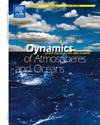基于Wyrtki指数的ENSO周期预测的不确定性降低
IF 2
4区 地球科学
Q2 GEOCHEMISTRY & GEOPHYSICS
引用次数: 0
摘要
利用综合表征ENSO动态特征的Wyrtki指数,评价了24个CMIP6模式对1980 - 2014年ENSO动态过程的拟合性能。我们确定了具有较好模拟能力的高技能(HS)模型和具有较差模拟能力的低技能(LS)模型。与观测资料和再分析资料相比,HS模式较好地模拟了1980 - 2014年热带太平洋的平均状态和ENSO的相关动力过程。相比之下,LS模式显示赤道冷舌更冷,温跃层斜坡更陡,太平洋中部和西部的信风更强。LS模式的纬向平流反馈较弱,而温跃层反馈较强,这可能是LS模式在模拟历史ENSO周期时观测到的偏差的原因。HS模式显示2066 - 2100年常规ENSO周期有缩短的趋势,这与24个CMIP6模式得出的ENSO周期持续时间无显著变化的结论形成鲜明对比。此外,HS模式和所有模式在SSP585情景下预估CP ENSO周期变短。而在LS模式下,CP ENSO周期变化不显著。本文章由计算机程序翻译,如有差异,请以英文原文为准。
Uncertainty reduction in ENSO periodicity projection based on the Wyrtki index
Using the Wyrtki index, which comprehensively characterizes the dynamics of ENSO, we evaluated the fitting performance of 24 CMIP6 models for the ENSO dynamic processes during the period from 1980 to 2014. We identified the high-skill (HS) models with better simulation capabilities and the low-skill (LS) models with poorer simulation abilities. Compared to observational and reanalysis data, the HS models better simulate the average state of the tropical Pacific and the associated dynamic processes of ENSO from 1980 to 2014. In contrast, the LS models show a colder equatorial cold tongue, a steeper thermocline slope, and stronger trade winds in the central and western Pacific. The zonal advection feedback in the LS models is weaker, while the thermocline feedback is stronger, which may contribute to the deviations observed in the LS models when simulating the historical ENSO periodicity. The HS models indicate a trend of shorter conventional ENSO periodicity for the period from 2066 to 2100, which contrasts sharply with the conclusion drawn from the 24 CMIP6 models that show no significant change in ENSO periodicity duration. Additionally, the period of CP ENSO is projected to become shorter under SSP585 scenario for the HS models and all models. In contrast, the CP ENSO period change is insignificant for the LS models.
求助全文
通过发布文献求助,成功后即可免费获取论文全文。
去求助
来源期刊

Dynamics of Atmospheres and Oceans
地学-地球化学与地球物理
CiteScore
3.10
自引率
5.90%
发文量
43
审稿时长
>12 weeks
期刊介绍:
Dynamics of Atmospheres and Oceans is an international journal for research related to the dynamical and physical processes governing atmospheres, oceans and climate.
Authors are invited to submit articles, short contributions or scholarly reviews in the following areas:
•Dynamic meteorology
•Physical oceanography
•Geophysical fluid dynamics
•Climate variability and climate change
•Atmosphere-ocean-biosphere-cryosphere interactions
•Prediction and predictability
•Scale interactions
Papers of theoretical, computational, experimental and observational investigations are invited, particularly those that explore the fundamental nature - or bring together the interdisciplinary and multidisciplinary aspects - of dynamical and physical processes at all scales. Papers that explore air-sea interactions and the coupling between atmospheres, oceans, and other components of the climate system are particularly welcome.
 求助内容:
求助内容: 应助结果提醒方式:
应助结果提醒方式:


